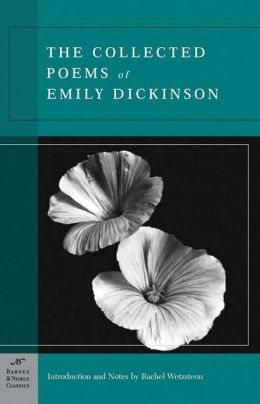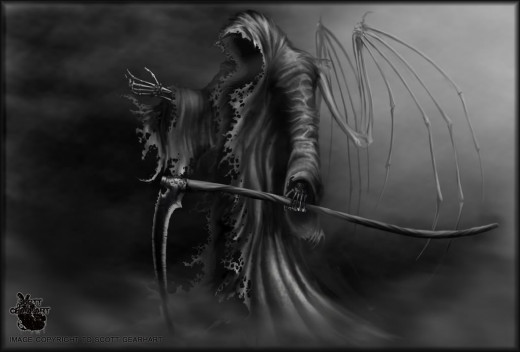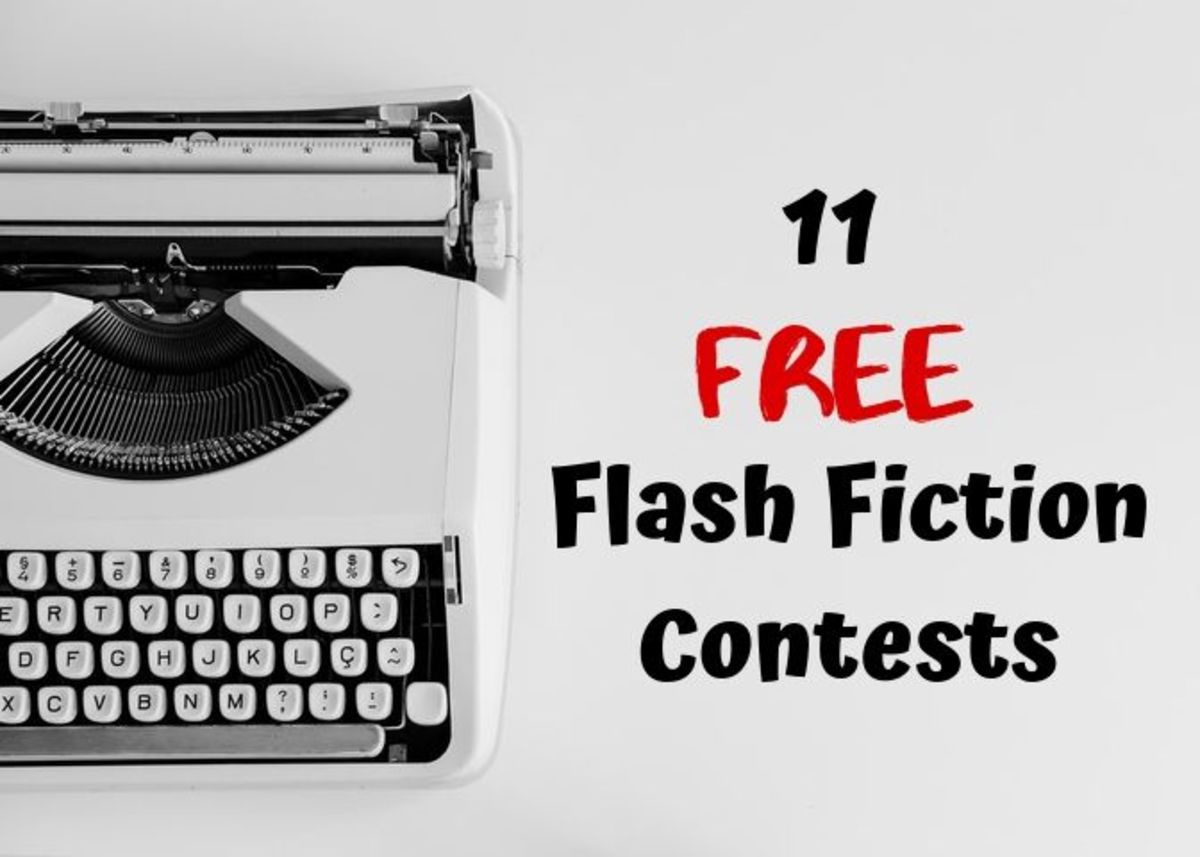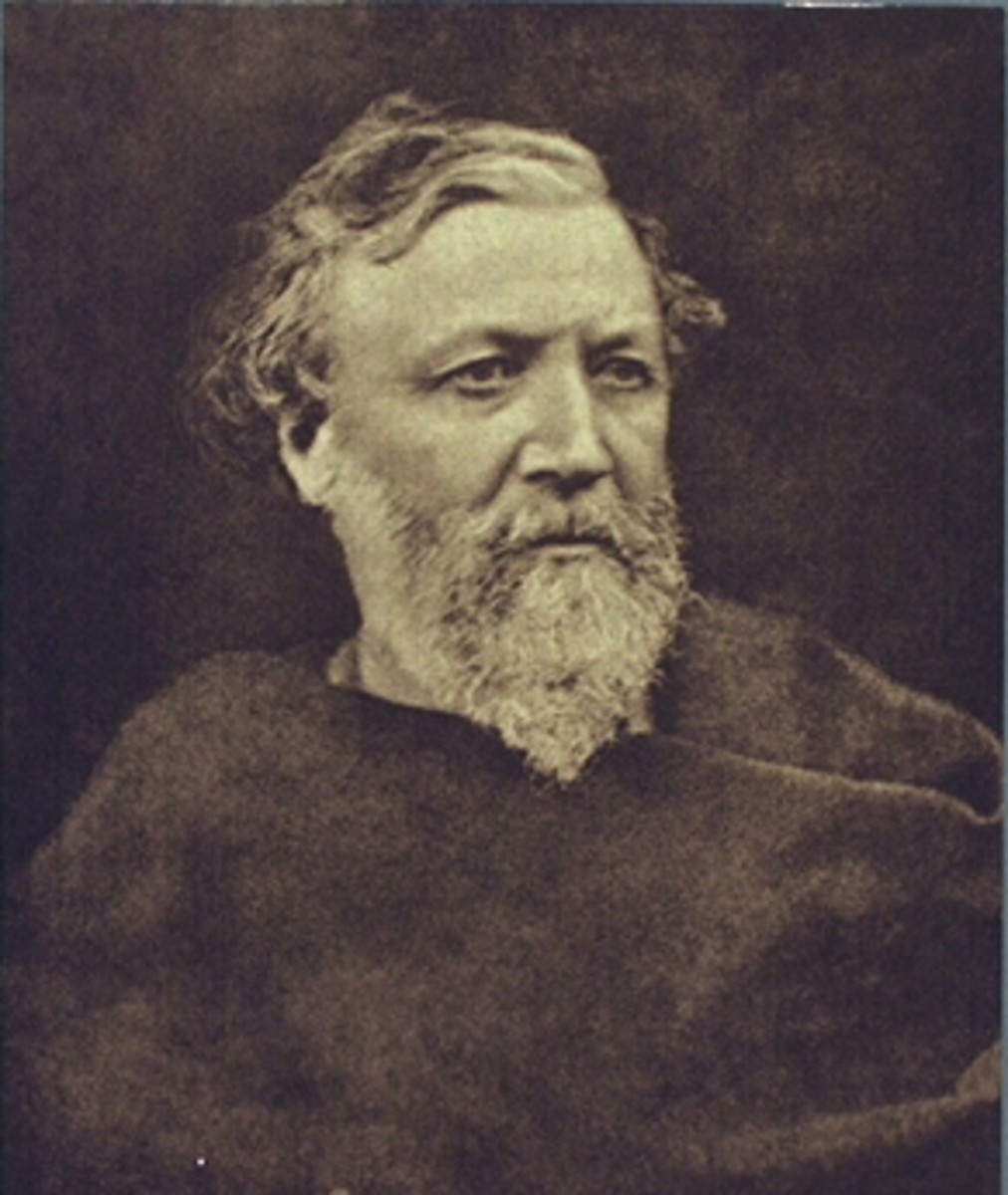I Used to Live Here Once Because I Could Not Stop for Death
Comparison
“Because I Could Not Stop for Death”, otherwise known as “The Chariot” (Dickinson, 1890, p.1) by Emily Dickinson and “I Used to Live Here Once” by Jean Rhys are two literary works that share the same theme, but have a lot more in common than just that. A person would think that there are more than a few differences with “Because I Could Not Stop for Death” being a poem and “I Used to Live Here Once” being a short story, but they are very much alike as they both use symbolism to convey their feelings or ideas through the story they are telling and both are told from the same point of view. The one major difference that there is between the two, is the fact that “Because I Could Not Stop for Death” has a lyrical tone to it to whereas “I Used to Live Here Once” is a short story and does not have the same kind of lyrical tone. Other than the one small difference of lyrical tone, this poem and this short story, by these two great literary women, even though written around ninety years apart, are so much alike that the theme of death shared by both is very vivid and present in the symbolism.
Symbolism is best known as “a movement in European literature and the visual arts c. 1885–c. 1910, based on the notion that the prime concern of art was not to depict, but that ideas were to be suggested by symbols, thus rejecting objectivity in favour of the subjective. It combined religious mysticism with an interest in the decadent and the erotic” (Thames and Hudson Dictionary, 1994, p. 1). There is tons of symbolism in Emily Dickinson’s “Because I Could Not Stop for Death”. Among some of the bigger symbolism is Death himself and Immortality. Some of the lesser symbols are slowness, coldness and eternity.
When she brings Death into the poem it is as though he is the spirit Death and not actually death itself, as his name can be found capitalized in the poem. Another way that she makes Death seem as though he were an actual entity is that she makes it seem as though Death, as a person or individual, is riding right beside of her, like she could put her arm around this entity. She brings Immortality into the picture as yet another person riding along with her and Death, like maybe even the driver of the chariot that they are all adventuring in “The carriage held but just ourselves
And Immortality” (Clugston, 2010, Sec. 12.3).
The lesser forms of symbolism in this particular poem are slowness, coldness and eternity. While being driven the carriage it seems as though they are passing everything slowly, like there is no bounds to time. She even says “We slowly drove, he knew no haste,” (Clugston, 2010, Sec. 12.3). The coldness symbol is first presented when the sun goes down and she says that “The dews grew quivering and chill,” (Clugston, 2010, Sec. 12.3). She tries to write this feeling off because of her gown, stating that her gown is only made of gossamer and that she was not wearing very much else at all in the cold of the outside, but the feeling of the cold has an underlying meaning. The last minor symbol kind of goes with the first two major symbols of Death and Immortality, and that is eternity. The reason that this appears to be a lesser symbol is because it seems like it would have been one to Dickinson, since she made Death and Immortality seem like actual presences, while she made eternity seem more like a time frame. Dickinson does this by telling us that the horses pulling the carriage always had their heads faced toward eternity, and also that she had guessed that at the beginning.
“I Used to Live Here Once” is a short story by Jean Rhys that is also full of symbolism, and even shares some of the same symbolism with “Because I Could Not Stop for Death”. Some of the major symbolism in this short story is remembrance and perception, muteness and coldness. When the story begins we see a woman who is remembering the stepping stones she used to step across in the river and the road that she used to travel to get home, however, she is seeing things in a different light than she used to. This scene can be seen when she says “It was a fine day, a blue day. The only thing was that the sky had a glassy look that she didn't remember. That was the only word she could think of. Glassy” (Clugston, 2010, Sec. 7.5, Para. 4). This statement makes one feel as though the woman is seeing something that she is used to seeing but it is not the way the woman is used to seeing that something. The first time we see the symbolism of muteness is when the woman first calls out to the children that she sees playing in her yard and they do not hear her. The woman then draws closer to the children and yells a second time, but yet the children still do not hear anything she is saying to them. The woman draws even closer to the children and speaks a third time, wanting to reach out and touch the children. Here, in this scene, is not only where we see the symbolism of muteness for a third time but where we also see the symbolism of coldness as we are told “It was the boy who turned. His grey eyes looked straight into hers. His expression didn't change. He said "Hasn't it gone cold all of a sudden. D'you notice? Let's go in"” (Clugston, 2010, Sec. 7.5, Para. 9). Coldness, as it was used as symbolism in both the poem, “Because I Could Not Stop for Death”, and this story, is a big symbol for death in pretty much everything. These to great literary works are just two of the pieces that use coldness as a symbol to let you know that the narrators in both are dead.
While both the short story and the poem show the symbolism of death, they show it in a somewhat different light, using different symbols to convey the feeling that the people in the stories are actually dead. The one symbol that remains a constant through both the story and the poem is coldness, where in the poem the person herself is cold and in the story the person causes the coldness to be felt by others. Either way, both writings are trying to symbolize the same theme. In the poem, “Because I could Not Stop for Death”, and the short story, “I Used to Live Here Once”, death is the overall theme as can been seen in the end of both works, since both of the narrators are dead the whole time.
Theme is “a unifying idea, image, or motif, repeated or developed throughout a work” (Collins English Dictionary, 2000, Para. 2). The theme of death is less symbolic and more outright and present in “Because I Could Not Stop for Death”. The title itself expresses the fact that the poem is about death. The poem basically goes over how this woman gets into this carriage with Death and Immortality and the adventure that they take in that carriage, from seeing children playing at recess to being a little bit chilly because she is wearing only a few small night items. This is “her first realization is that she is at the mercy of Death” (Bernhard, 2013, Para. 6). At the end of the adventure they reach this house that looks less like a house and more of a swelling of the ground, which is quite obviously meaning a grave site. Here is where she explains that it has been centuries since she first encountered Death himself and she realized that when she got into the carriage that they were headed towards eternity. Basically here is where she tells us that she has been dead this whole time. This can been seen when she says; “Since then 'tis centuries, and yet each
Feels shorter than the day
I first surmised the horses' heads
Were toward eternity” (Clugston, 2010, Sec. 12.3, Para. 7). Even though there is tons of symbolism in this poem, even the part when she speaks about the setting sun passing them by, the poem is kind of straightforward with the theme of death. The short story “I Used to Live Here Once” is less straightforward and more about the symbolism in the story.
Emily Dickinson

Because I Could Not Stop for Death
The theme of death is also very present in the story “I Used to Live Here Once” by Jean Rhys. This short story relies more on the symbolism in the story to let the reader know that the person telling the story is actually dead. The coldness and the muteness in the story come after this woman describes everything that she remembers about where she used to live, and while it seems like she has been gone for a while and is returning, the reader is not exactly sure until the woman tries to interact with the children. The only part in this story that is really straightforward and to the point is the end where she says; “Her arms fell to her sides as she watched them running across the grass to the house. That was the first time she knew” (Clugston, 2010, Sec. 7.5, Para. 10). Here is where it shows that “she knows that she cannot return to the freshness and vitality of her youth” (Aubrey, 2001, Para. 17). It does not make a difference on whether the reader can tell the woman is dead from the symbolism or the outright realization, either way; at the end it is very obvious that the theme for this story is death. Both of these literary works have symbolism in them that convey the theme of death, but there is another way these works are similar and that is the point of view that they are told in.
Point of view is the “term used to refer to the perspective or, more literally, the view from which something is produced or interpreted. It is used in various, sometimes overlapping ways” (Dictionary of Sociolinguistics, 2004, Para. 1). First-person point of view “occurs when the narrator (describing his or her personal action and thoughts) is a participant in the story. This often means that the main character is the narrator, but some stories are told effectively from the point of view of a minor character who describes and interprets the actions of the central character” (Clugston, 2010, Sec. 5.2, Para. 2). Both “Because I Could Not Stop for Death” and “I Used to Live Here Once” are told from the first-person perspective. The narrator in both literary works is telling the story about themselves, showing the reader things from their point of view only. This point of view is limited in the respect that we can only feel what the narrator themselves are feeling. There really is no description of anyone else’s feeling in either of these works. However, when a story is told in first person view there is really no need to feel anyone else’s feelings, as the story is most likely focused on one person anyway. In “Because I Could Not Stop for Death” the narrator describes her journey and the way that everything feels to her, her perception of things. The reader does not get to see how Death feels about the narrator, or about how Immortality feels, the only thing that the reader gets to feel is the narrator’s feeling. The poem is focused solely on the narrator because it is about her journey, her feelings and her realization that she is dead. The same can be said for “I Used to Live Here Once” and the narrator of that story. There are other characters in this story, but we never really get to feel exactly what they are feeling, just the narrator. The reader is looking at things from the narrator’s point of view only, therefore, the reader only gets to feel what the narrator is saying, none of the other characters that are present in the writing really matter. In a way this is limited but in a way it is supposed to be.
With all the similarities in these two writings one could truly ask themselves how these works differ at all. It may not seem like there are any differences but, “Because I Could Not Stop for Death” is a poem to where as “I Used to Live Here Once is a short story. A poem utilizes rhyme and assonance to give it rhythm to get the writer’s point across. A short story has no need for rhythm to convey the point. A short story is all about description in a short period of time through the use of symbolism, tone and point of view. A poem is about imagination, emotions and rhythm to get the point across. So, in other words, basically one could say that the only thing that makes these two seemingly very similar works different is rhyme scheme.
“Because I Could Not Stop for Death” is a poem because it utilizes assonance and rhyme. The end of the stanzas sound alike which provides a rhythm for this poem. Sometimes the words directly rhyme where other times the words more just sound alike. Assonance is where “two words have similar vowel sounds, but the consonants that follow the similar sounds are different” (Clugston, 2010, Sec. 10.2, Para. 3). Rhyming is where “two words have similar vowel sounds, but the consonants that precede the similar sounds are different. An example of assonance in this poem is; “We passed the school where children played” and “We passed the fields of gazing grain” (Clugston, 2010, Sec. 10.2, Para. 3). Played and grain sound alike but do not really rhyme. An example of rhyme in this poem is; “Their lessons scarcely done-” and “We passed the setting sun-”. The words done and sun directly rhyme, showing that this poem uses assonance and rhyme together to make a good rhythm.
Being a short story “I Used to Live Here Once” has no rhyme or assonance. There is no need for either of these things since it is not in poetry form and is in story form. There is no need for rhythm in this story to convey the feelings in this story since sentences are utilized. One could turn a short story into a poem and give it rhyme and rhythm, as a poem could be turned into a short story if the rhyme and rhythm were removed if it suited one’s fancy. Either way the short story is still not as short as a poem is, so it does not have to use an interesting way to put across the feelings in the writing.
“Because I Could Not Stop for Death”, otherwise known as “The Chariot” (Dickinson, 1890, p.1), by Emily Dickinson and “I Used to Live Here Once” by Jean Rhys are two literary works that share the same theme, the theme of death, but have a lot more in common than just that. The symbolism and the point of view in both writings really help to get the point that the narrator’s from both stories are actually no longer among the living. Other than the one small difference of lyrical tone, these two great literary works, by these two great literary women, even though written around ninety years apart, are so much alike that the theme of death shared by both is very vivid and present in the symbolism.
Jean Rhys

I Used to Live Here Once
Resources
Aubrey, Brian. 2001. Jean Rhys. Retrieved from
Bernhard, F. 2013. Dickinson’s because I could not stop for death. Retrieved from
Clugston, R.W. 2010. Because I could not stop for death. In Journey into Literature. Retrieved from
https://content.ashford.edu/books/AUENG125.10.2/sections/h12.4#a73
Clugston, R.W. 2010. I used to live here once. In Journey into Literature. Retrieved from
https://content.ashford.edu/books/AUENG125.10.2/sections/sec7.5#a14
Clugston, R.W. 2010. Point of view. In Journey into Literature. Retrieved from
https://content.ashford.edu/books/AUENG125.10.2/sections/sec5.2
Clugston, R.W. 2010. Sounds and tones in poems. In Journey into Literature. Retrieved from
https://content.ashford.edu/books/AUENG125.10.2/sections/sec10.2
Dickinson, E. 1890. The chariot. In Poems by Emily Dickinson. Retrieved from
point of view. (2004). In A Dictionary of Sociolinguistics. Retrieved from http://www.credoreference.com.proxy-library.ashford.edu/entry/edinburghds/point_of_view
Symbolism. (1994). In The Thames & Hudson Dictionary of Art and Artists. Retrieved from http://www.credoreference.com.proxy-library.ashford.edu/entry/thaa/symbolism
theme. (2000). In Collins English Dictionary. Retrieved from http://www.credoreference.com.proxy-library.ashford.edu/entry/hcengdict/theme

Which Do You Like Better??
Which did you like better, Emily Dickinson or Jean Rhys?
Rate This Hub
© 2015 Kelly Miller








